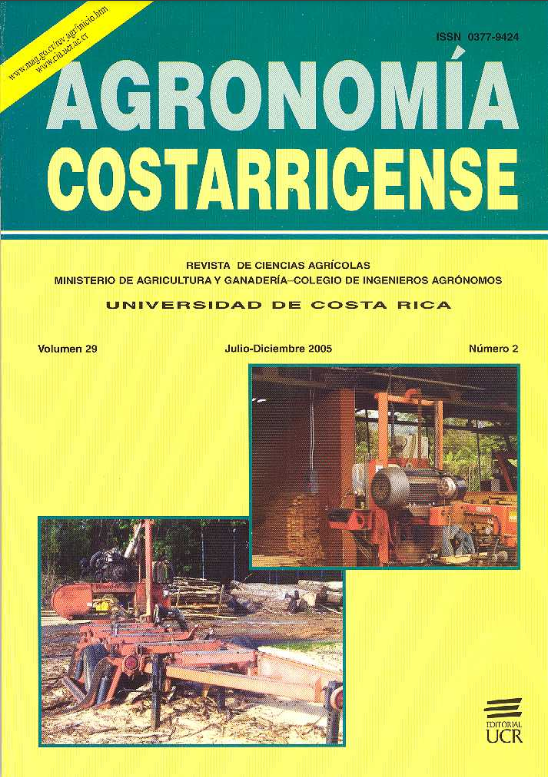Resumen
Con el objetivo de evaluar el impacto que tiene el uso del suelo sobre algunas propiedades de fertilidad del suelo y la forma como estas se distribuyen espacialmente, se realizó el presente trabajo, en un suelo Typic Hapludands, en 3 lotes dedicados a caña de azúcar, café y bosque secundario. Se llevó a cabo un muestreo de suelos en un diseño de cuadrícula, con puntos georeferenciados cada 40 m, para un total de 38 muestras. Los resultados del análisis químico de los suelos fueron interpolados usando el análisis geoestadístico Kriging; los datos también fueron analizados a través de la estadística tradicional, en forma total y por áreas de manejo. Con los datos interpolados se generaron mapas, los cua les presentaron una alta correspondencia entre las áreas de uso de suelo y el grado de variación
de las propiedades evaluadas. La caña de azúcar mostró valores bajos de Ca, Mg, K y P, lo cual
estuvo ligado a la alta extracción y baja recuperación de estos elementos al suelo. El cultivo del café mostró valores mayores de Ca, Mg, K y P, producto de una fertilización intensa, así como una tendencia a valores mayores de acidez intercambiable, producidos por la intensa fertilización nitrogenada. El área con bosque mostró valores entre la caña de azúcar y el café. La estadística tradicional detectó estas diferencias generales por lotes, aunque no tuvo la capacidad de mostrar los cambios en el espacio y las gradientes de concentración existentes. Se concluye que la distribución espacial de las características químicas, ligadas a la fertilidad del suelo, estuvo fuertemente liga da al manejo agronómico y que el interpolador demostró ser útil para predecir la distribución de las propiedades de fertilidad en el paisaje.
##plugins.facebook.comentarios##

Esta obra está bajo una licencia internacional Creative Commons Atribución-NoComercial-SinDerivadas 4.0.
Derechos de autor 2024 Agronomía Costarricense


